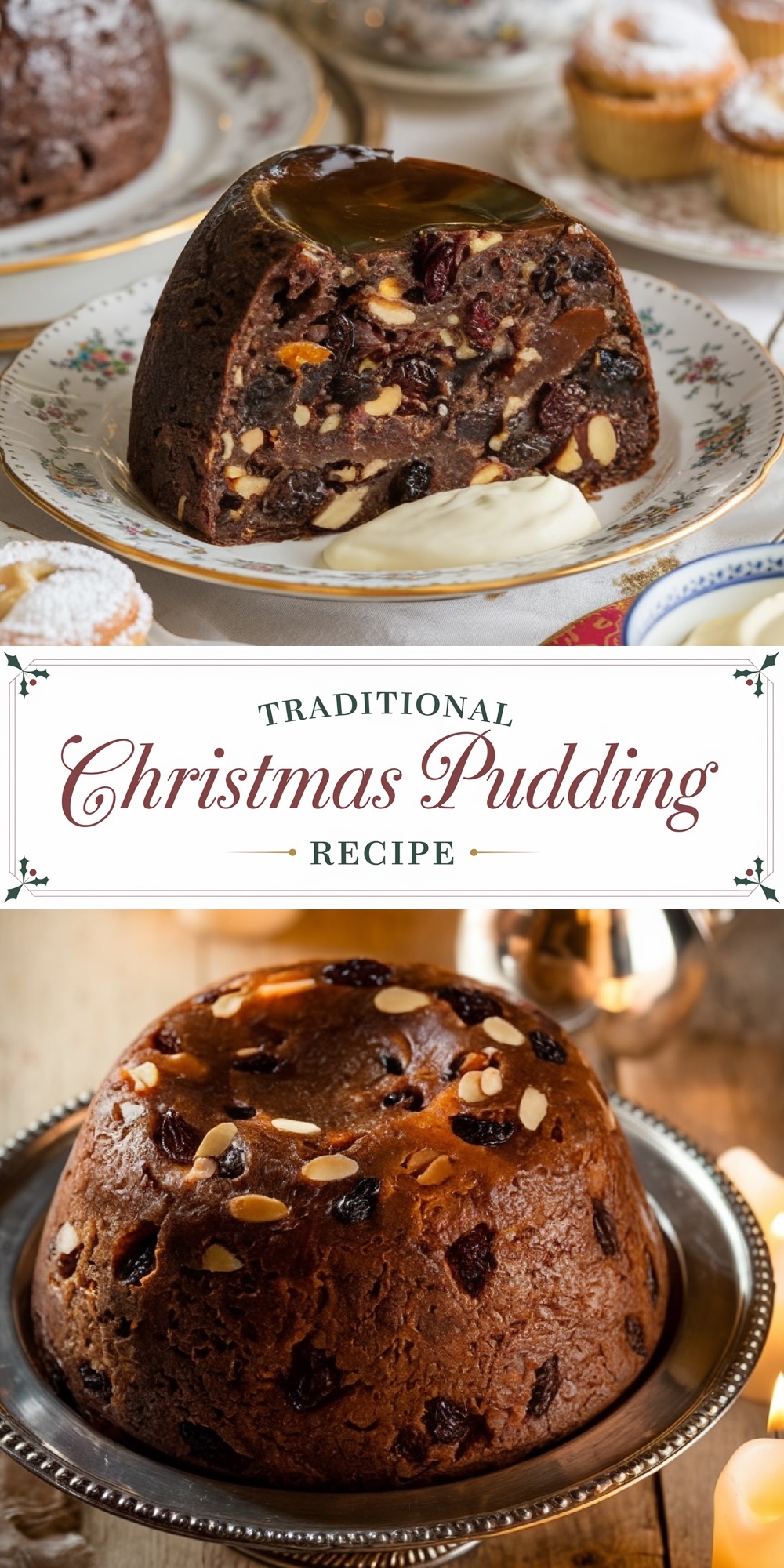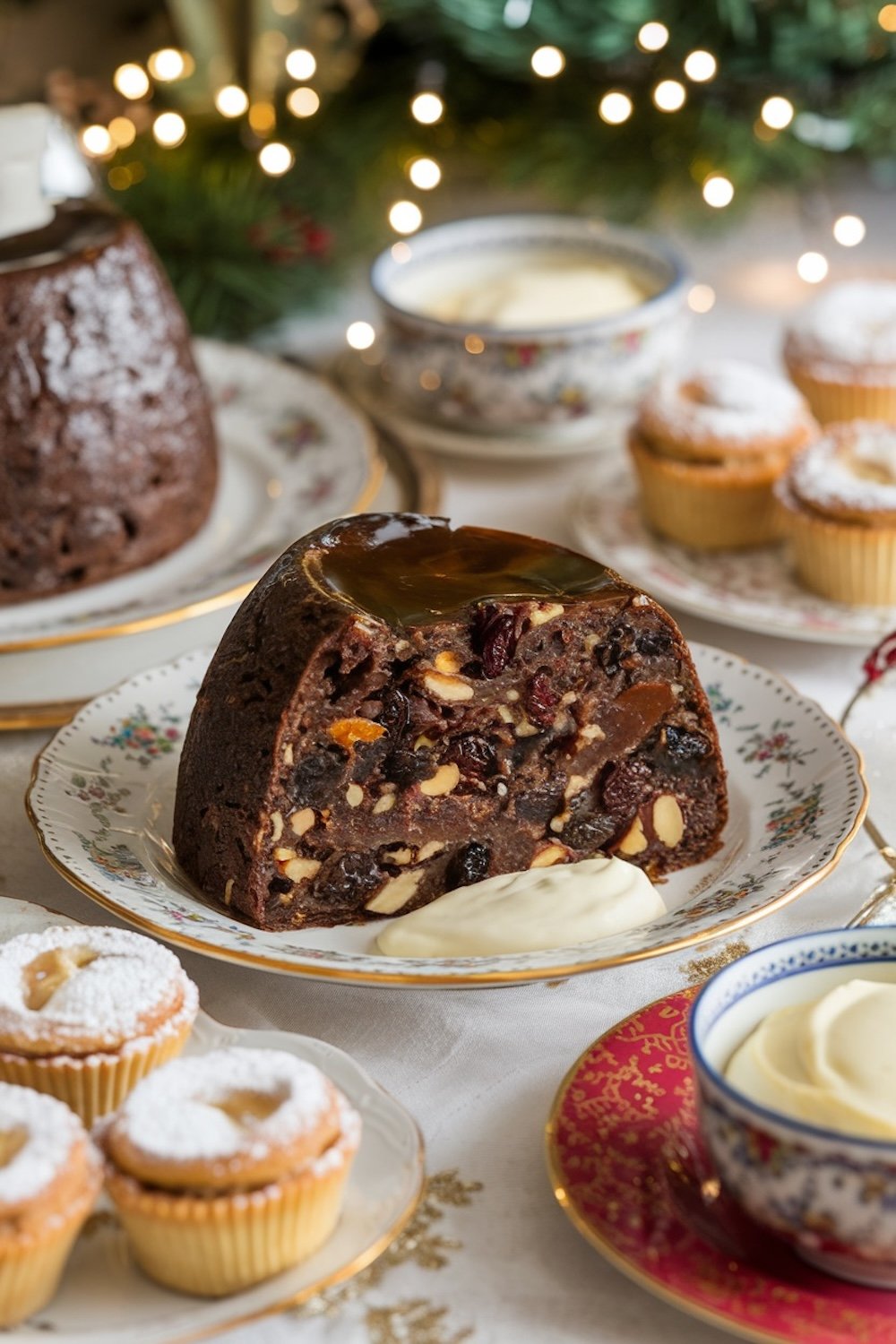Christmas pudding carries more history than almost any other holiday dessert. This traditional Christmas pudding recipe follows the classic English method with soaked fruit, warm spices, and a long, gentle steam that develops deep flavor.
You will learn why each ingredient matters, how to prepare it with confidence, and how to serve and store it properly. The goal is to give you a recipe you can trust, one that feels timeless. Many people search for Christmas pudding recipes easy enough to follow at home without losing the character of the old English version. That is exactly what this recipe offers.
Families across Britain have made some form of traditional Christmas pudding for centuries. Some call it figgy pudding. Others know it as Xmas pudding. No matter the name, the heart of this recipe lies in dried fruit, citrus zest, suet, and dark sugar. What makes this guide different is the perspective: why each choice matters, and how it shapes the final dessert.
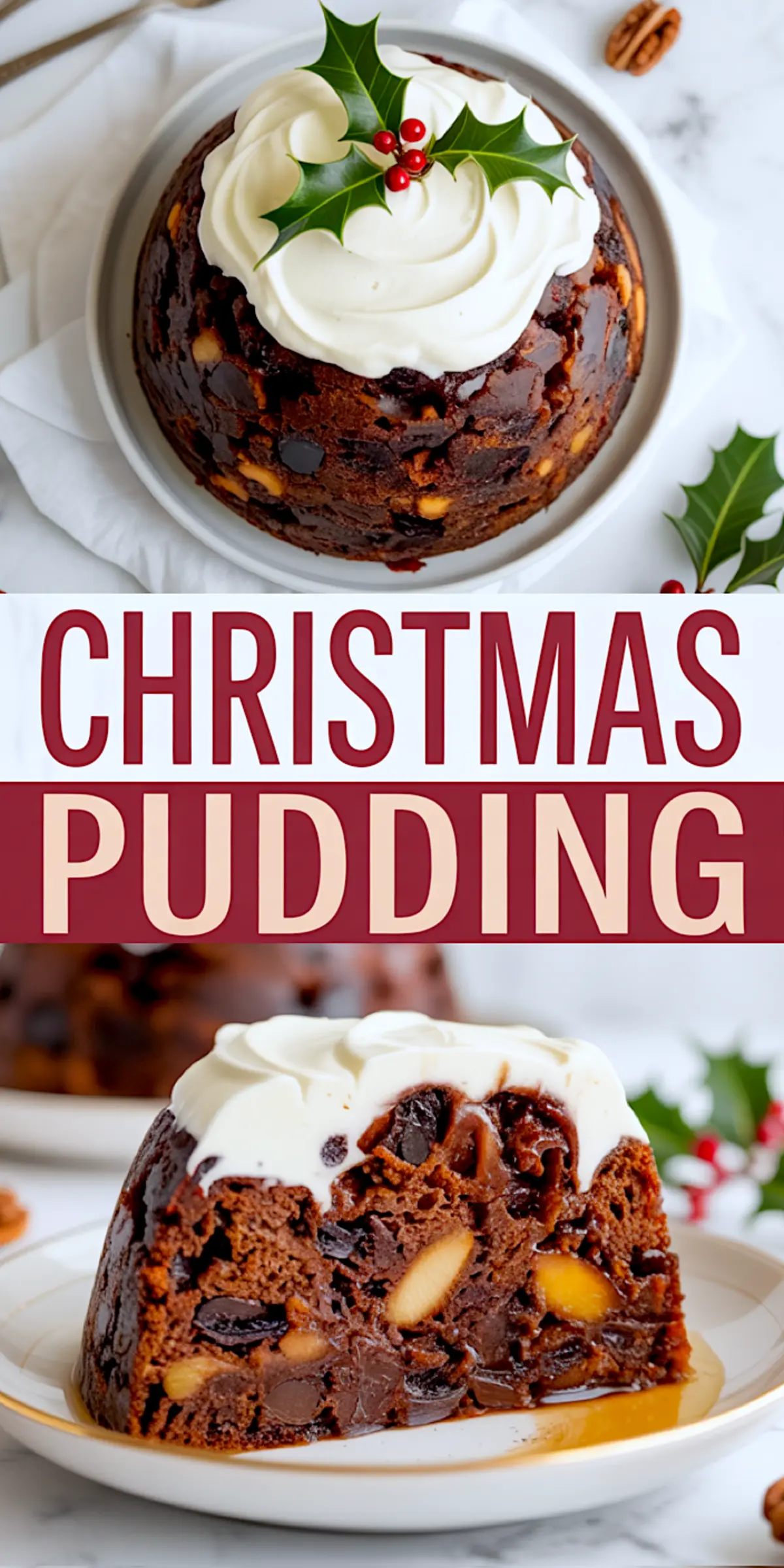
Why Each Ingredient Deserves Its Place
Flour and baking powder form the base. They hold the pudding together without making it heavy. A small amount of leavening is enough to lift the mixture just slightly during the long steam.
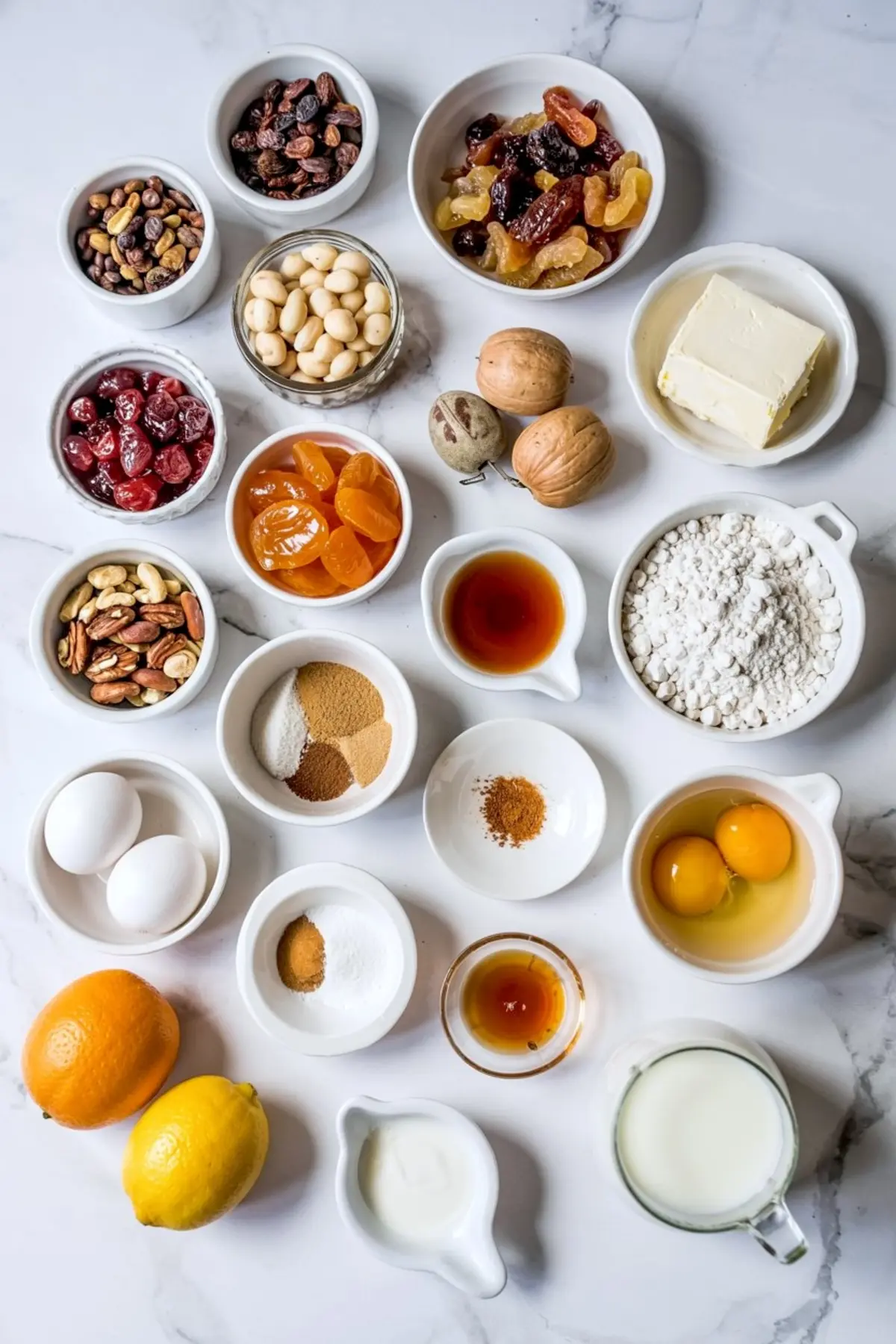
Spices like cinnamon, nutmeg, and cloves set the tone. They warm the entire dessert and give the pudding its recognizable seasonal taste. I always lean a little heavier on nutmeg than some recipes suggest. It gives the pudding a softer fragrance that feels closer to homemade mulled drinks.
The dried fruits are the real centerpiece. Raisins and sultanas bring sweetness. Apricots and figs add a subtle chew. Cherries give color that makes each slice look festive on the plate. Mixed peel brings in gentle bitterness that balances the sugar. If one fruit is skipped, the whole character changes. I’ve tested versions without candied peel and they always feel incomplete.
Chopped nuts add richness. Walnuts or pecans work best. They soften during steaming but leave behind a little crunch. I use them for balance against the soft fruits.
Dark brown sugar creates a caramel base. It binds the fruit and gives the pudding its signature deep hue. White sugar lacks that depth, which is why I never use it here.
Suet keeps the texture light but still rich. It melts into the batter slowly during steaming and prevents the pudding from feeling dense. Butter can be used instead, but the outcome is slightly softer.
Citrus zest lifts the heaviness of the dried fruit. Orange and lemon together brighten the dessert. A grated apple adds moisture and keeps the pudding from feeling dry after weeks of resting.
The brandy or dark rum carries flavor deep into the fruit. I find rum softer, while brandy gives a sharper edge. Either works, though rum tends to appeal more to those who prefer gentle sweetness.
A Practical Comparison: Suet or Butter?
I’ve made this recipe with both suet and butter, and each brings a different finish. Suet creates the most traditional pudding. The texture feels lighter than you would expect for such a rich dessert, and the pudding slices cleanly. Butter gives a more modern touch. The flavor is creamier, but the texture is denser.
If you want a traditional Christmas pudding recipe in the true English style, go with suet. If you prefer a softer and slightly more cake-like bite, butter is your answer. In my own kitchen, I use suet when making a pudding weeks ahead, and butter if I plan to serve it within a few days.
How the Process Builds Flavor

The first step is soaking the fruit. This isn’t just habit. The alcohol and citrus zest plump the dried fruit and help the spices cling to them. Skipping the soak leaves the pudding flat.
Mixing the dry ingredients comes next. I whisk them longer than most would. A full minute helps the spices spread evenly and prevents pockets of cinnamon or nutmeg in the final pudding.
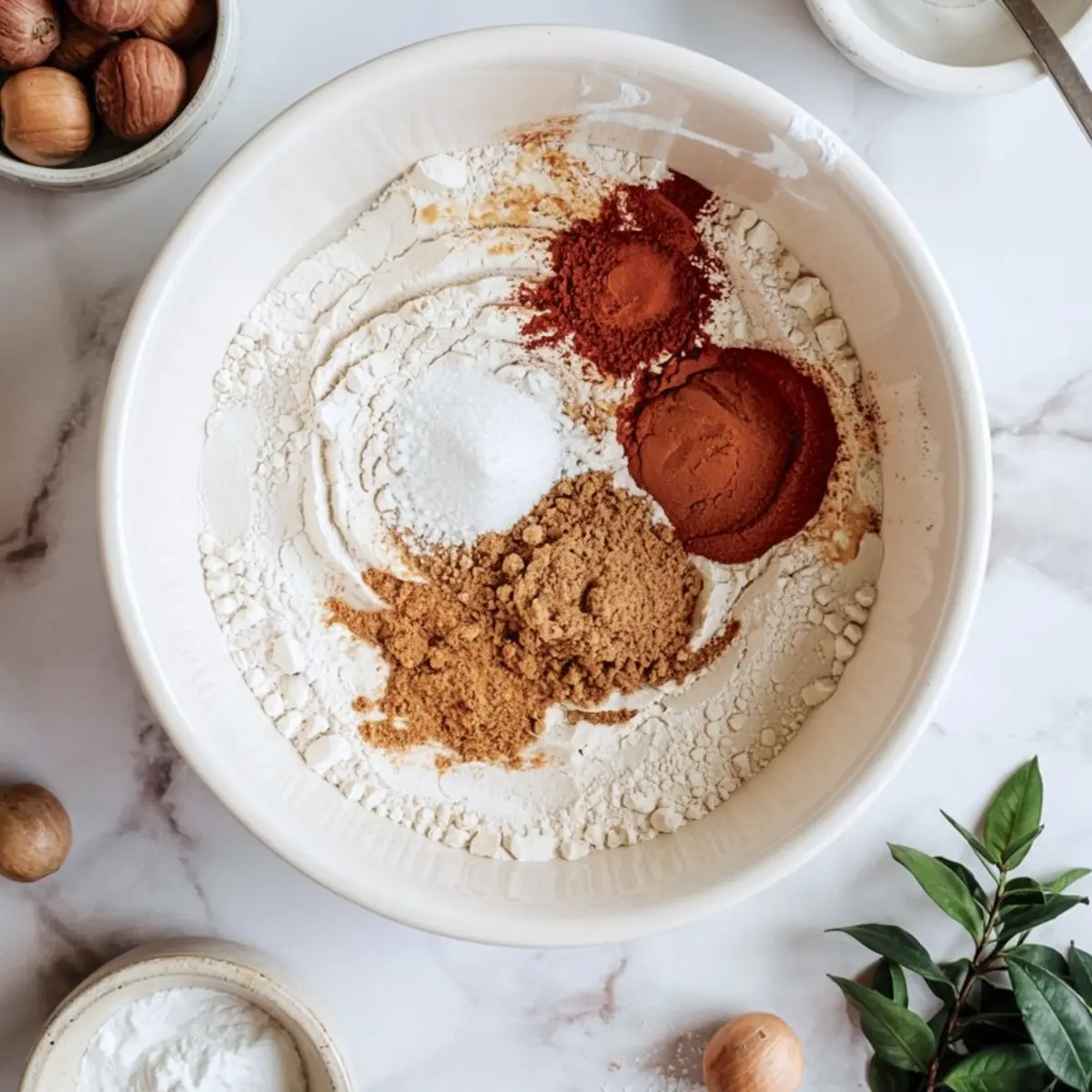
Combining everything is where patience matters. The mixture looks thick and almost too heavy at first. Keep folding until it feels spoonable. A splash more milk can help, but only if the batter refuses to move. Too much milk will make the pudding collapse during steaming.

Preparing the basin with parchment and foil may feel tedious. That fold in the middle allows expansion. I’ve learned the hard way that skipping it leads to cracked tops and uneven texture.
Steaming takes hours, and that is the point. The gentle heat slowly melds fruit, sugar, and suet into one solid piece. The pudding emerges dark, fragrant, and dense with flavor.
Serving This British Christmas Dessert

A traditional Christmas pudding recipe deserves a grand finish. Custard, whipped cream, or brandy butter are all classics. I prefer custard because it softens the richness without overpowering it.
For a dramatic table moment, warm a little brandy, pour it over the pudding, and ignite it carefully. The blue flame burns quickly, leaving a festive sheen. Children’s eyes widen every time. It feels like part of the holiday theater.
If you want to pair it with other holiday desserts, consider serving it alongside a Classic Yule Log for contrast. The light sponge and cream of the log sit well next to the dense fruit pudding.
Storage and Make-Ahead Notes
Christmas pudding keeps beautifully. Wrapped well in parchment and foil, it rests in a cool, dark place for weeks. The flavor deepens as it sits, which is why I make mine at least one week before Christmas.
To reheat, steam it again for about two hours. The pudding softens and tastes as fresh as the day it was made. Freezing works, though I rarely do it. The long steaming and resting period give the pudding a resilience that few other desserts have.
If you enjoy planning ahead, you may want to try my Christmas Bread Pudding as another option for make-ahead entertaining. It uses bread instead of flour, which changes the texture but keeps the festive mood.
A Few Related Holiday Ideas
This pudding belongs in a larger table of Christmas desserts ideas. Pair it with Christmas Cracker Toffee for something crunchy. Or balance it with a fresh Christmas Salad when the meal feels too heavy. If you prefer fruit pies, a Christmas Pie also fits naturally on the table.
Final Thoughts and Community Invitation

Christmas pudding takes time, but that is its gift. The process itself reminds us that some desserts are worth the wait. Each step builds patience, and each slice tells a story of gatherings past and present.
I encourage you to save this guide to your holiday Pinterest boards, so you can come back when the season begins. Try the recipe, and share in the comments how it turned out for you. Did you choose suet or butter? Did you flame it at the table? These small details are what make a holiday recipe come alive.
Christmas Pudding Recipe

Christmas pudding is a dense, steamed dessert made with dried fruit, spices, and a splash of rum. I use a traditional Christmas pudding recipe with suet, dark sugar, and citrus zest, then steam it low and slow for hours. This version sticks to the classic English Christmas pudding style and keeps well for days. If you’re making British Christmas pudding ahead of the holidays, this one fits the tradition without overcomplicating the process. It’s one of my favorite Christmas pudding recipes easy enough to prep in advance. I serve it with custard or cream and always add it to my list of British Christmas desserts and Xmas pudding ideas for a proper holiday finish.
Ingredients
- DRY INGREDIENTS
- 150g all-purpose flour (1 cup)
- 1 tsp baking powder
- 1 tsp ground cinnamon
- ½ tsp ground nutmeg
- ½ tsp ground cloves
- ¼ tsp salt
- FRUITS AND NUTS
- 200g raisins
- 200g sultanas
- 100g chopped dried figs or prunes
- 100g chopped dried apricots
- 100g chopped glacé cherries
- 100g mixed candied peel
- 100g chopped nuts (walnuts, pecans, or almonds)
- WET INGREDIENTS
- 200g soft dark brown sugar (1 cup packed)
- 200g shredded suet (or unsalted butter if preferred)
- 2 large eggs
- 100ml milk (plus more if needed)
- Zest of 1 orange and 1 lemon
- 75ml brandy or dark rum
- 1 tsp vanilla extract
- 1 apple, grated
Instructions
- SOAK THE FRUIT: In a large bowl, combine the raisins, sultanas, dried figs or prunes, dried apricots, glacé cherries, candied peel, and chopped nuts. Add the brandy, orange and lemon zest, and vanilla extract. Stir to combine, then cover and let sit at room temperature overnight to allow the flavors to blend and the fruit to plump up.
- MIX THE DRY INGREDIENTS: In a large mixing bowl, whisk together the flour, baking powder, cinnamon, nutmeg, cloves, and salt until evenly combined.
- COMBINE THE BATTER: Add the suet or softened butter to the dry mixture, followed by the brown sugar, grated apple, and the soaked fruit mixture. In a separate bowl, beat the eggs with the milk, then pour into the main mixture. Stir everything together thoroughly. The batter should be thick and spoonable—add a bit more milk if needed to adjust the consistency.
- PREPARE THE PUDDING BASIN: Grease a 1.5-liter (6-cup) pudding basin well with butter or oil. Spoon the batter into the basin, pressing down lightly to eliminate air pockets. Level the surface with a spoon or spatula.
- COVER THE PUDDING: Cut a piece of parchment paper and a piece of aluminum foil large enough to cover the top of the basin. Fold a pleat in the center of both to allow for expansion. Place the parchment on first, then the foil, and secure tightly around the rim with kitchen string.
- STEAM THE PUDDING: Set a trivet or inverted saucer in the bottom of a large, deep pot. Place the pudding basin on top. Pour in boiling water until it reaches halfway up the sides of the basin. Cover the pot with a tight-fitting lid and steam for 6 hours, checking occasionally to top up the water with more boiling water if needed.
- COOL AND STORE: Once steaming is complete, carefully lift the basin out of the pot and let it cool completely at room temperature. Once cool, replace the parchment and foil with fresh layers, then store the pudding in a cool, dark place for at least one week and up to eight weeks before serving.
Notes
Suet gives a traditional texture but can be substituted with unsalted butter.
To reheat, steam the pudding again for 1.5 to 2 hours before serving.
Serve with brandy butter, custard, or whipped cream.
To flame the pudding, warm a few tablespoons of brandy, pour over the pudding at the table, and ignite carefully.
Nutrition Information
Yield
12Serving Size
1Amount Per Serving Calories 525Total Fat 23gSaturated Fat 10gTrans Fat 0gUnsaturated Fat 11gCholesterol 43mgSodium 147mgCarbohydrates 74gFiber 5gSugar 51gProtein 7g
My Memories From Last Christmas
